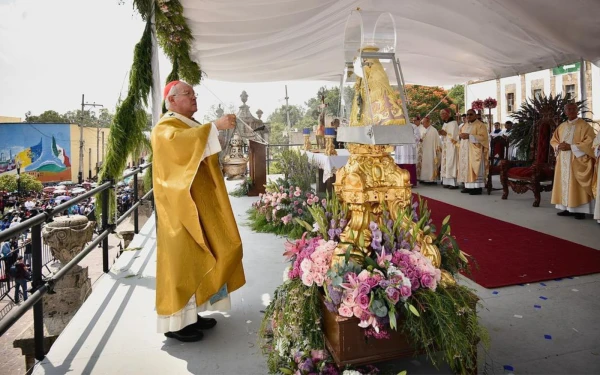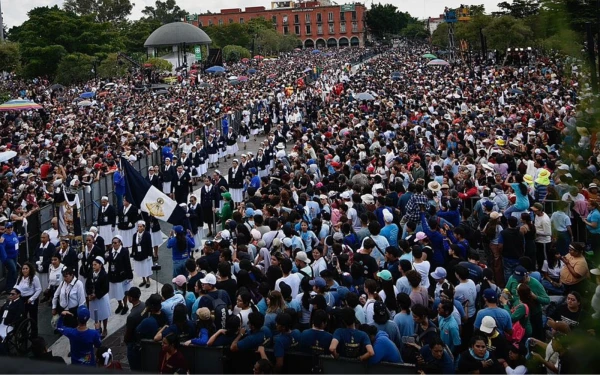With a record number of three million faithful, the Pilgrimage of Our Lady of Zapopan once again gathered crowds in Jalisco (Mexico), heeding the call of Cardinal Francisco Robles Ortega, Archbishop of Guadalajara, to walk together, be inspired by Mary and renew hope.
The Pilgrimage, declared Since 2018, Intangible Cultural Heritage of Humanity by UNESCO, it pays tribute to the venerated image of the Virgin of Zapopan, patron saint of the Archdiocese of Guadalajara and symbol of faith and unity for the residents of Jalisco.
Receive the main news from ACI Prensa by WhatsApp and Telegram
It is increasingly difficult to see Catholic news on social media. Subscribe to our free channels today:
The route, about nine kilometers, connects the Metropolitan Cathedral of Guadalajara with the Basilica of Zapopan. As she walks, the image of the Virgin crosses neighborhoods, hospitals, schools and markets, accompanied by a human river that prays, sings and dances.
After the conclusion of the event, the Archdiocese of Guadalajara reported on its social networks that nearly 3 million faithful accompanied “La Generala”, as the Virgin of Zapopan is known, “setting a record of participation in the 291st Pilgrimage.”
“With Mary we are filled with hope”
The festivity culminated with a Mass in the Basilica, presided over by Cardinal Francisco Javier Robles Ortega, Archbishop of Guadalajara, who invited the faithful to view this walk not only as a devotional act, but as a sign of unity.
“We have experienced that with her (the Virgin), walking together we discover what we are: true brothers,” he expressed.
The cardinal pointed out that this shared experience must be transferred to daily life in order to “build relationships of commitment, understanding and peace.”

“Walking together,” he added, “we can know each other and discover ourselves vulnerable, but also knowing each other helps each other. Walking the journey together with Mary, we are filled with hope.”
In this sense, Cardinal Robles mentioned that, like the Virgin, Catholics must be “pilgrims of hope”, called to seek “a better future for our lives, for our families, for our society.”
“How much we need, brothers and sisters, to see a better future!” he stated, adding that by being inspired by that future it will be possible for us to “forget about the divisions, the fruitless struggles that we often have as a society.”

In this sense, he pointed out that this journey is not only a social tradition, but also an invitation to commit to “a more demanding future for us” and “to be better, to change our lives, to improve our relationships, to build bridges, to be more sensitive to the needs of others.”
In line with the recent message of Pope Leo

